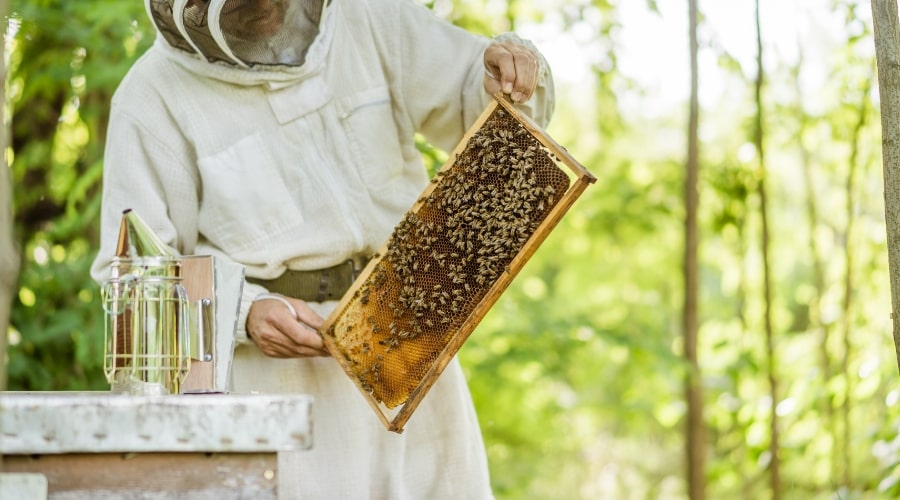Understanding the life cycle of a honeybee helps you care for your hive effectively. Each bee goes through four distinct stages: egg, larva, pupa, and adult.
The Egg Stage
The queen lays eggs in individual cells within the comb. She lays fertilized eggs to produce female workers and unfertilized eggs to produce male drones. Eggs are tiny, oval-shaped, and translucent. Each one is about the size of a grain of rice.
Eggs remain in this stage for approximately three days. During this time, they stay attached to the bottom of the cell. Their development depends on the hive’s temperature and conditions, which must be carefully maintained by the worker bees.
The Larva Stage
After three days, the egg hatches into a larva. Worker bees immediately begin feeding the larva a nutritious substance called royal jelly. Larvae destined to become workers or drones transition to a diet of pollen and nectar after three days. Larvae destined to become queens continue receiving royal jelly throughout their development.
Larvae grow quickly, shedding their skin several times as they increase in size. The workers then cap the cell with wax to allow the larva to begin pupating. The larva stage lasts about six days, depending on its future role in the hive.
The Pupa Stage
Once the cell is capped, the larva spins a cocoon and enters the pupa stage. Inside the cocoon, it undergoes metamorphosis. Its body transforms into a fully developed bee, complete with wings, legs, and antennae.
The duration of the pupa stage depends on the type of bee:
- Queen: 7-8 days
- Worker: 12 days
- Drone: 14-15 days
During this time, the hive’s workers ensure the environment remains stable. Any disruptions can impact the development of the bee.
The Adult Stage
When the transformation is complete, the new bee chews through the wax cap and emerges. Each caste (queen, worker, or drone) has a specific role within the hive.
- Queen: The queen’s primary job is to lay eggs. A healthy queen can lay up to 2,000 eggs daily during peak seasons [TO BE VERIFIED]. She also produces pheromones to regulate the hive’s behavior.
- Workers: Worker bees perform various tasks based on their age. Young workers clean cells and feed larvae, while older ones forage for nectar and defend the hive.
- Drones: Male drones mate with queens from other hives. They do not collect food or perform other tasks within the hive.
The life cycle restarts as the queen lays new eggs, ensuring the colony’s ongoing survival.
Lifespan Variations
The lifespan of honeybees varies by caste:
- Queen: 2-5 years [TO BE VERIFIED]
- Worker: 6 weeks during summer; several months in winter
- Drone: 6-8 weeks, depending on mating success
By understanding these timelines, you can anticipate hive activity and identify potential issues quickly.
Monitoring the Life Cycle
Regular inspections help you monitor the colony’s health. Look for:
- Presence of eggs, larvae, and capped brood
- Even patterns of brood development
- Adequate food stores for larvae
Spotting irregularities early helps you intervene before issues escalate. Knowing the stages also helps you predict hive growth and behavior.
With this knowledge, you’re equipped to nurture your hive and enjoy a successful beekeeping experience.


